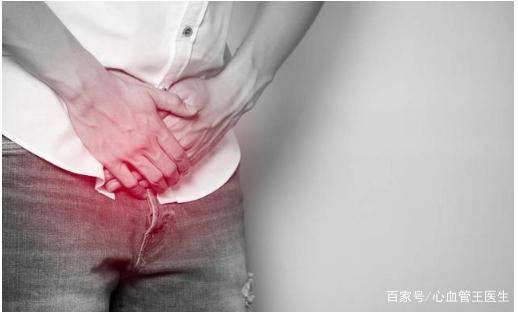Most people know about the prostate, but only know one aspect of it, not the other. More people know that as men age, prostate problems may arise, leading to frequent nocturnal urination, incomplete emptying of the bladder, and other issues.
What is the prostate?
The prostate is an accessory gland of the male reproductive system, located between the bladder and the urogenital diaphragm, surrounding the base of the urethra, resembling a slightly flattened chestnut in shape and size. It is wide at the top, tapering at the bottom, relatively flat at the back, adjacent to the rectum, and can be palpated through rectal examination. It has a vertical diameter of 3cm, horizontal diameter of 4cm, anteroposterior diameter of 2cm, and weighs about 20g. Its size and function largely depend on androgens. In children, the prostate is small and rapidly grows during sexual maturity; in elderly individuals, glandular tissue gradually degenerates, leading to prostate enlargement, which compresses the urethra, causing difficulties in urination.
Prostatic secretion is a major component of semen, characterized by a colorless turbid fluid with weak acidity (pH 6.5), rich in proteolytic enzymes, fibronectin, which acts to liquefy semen; it also contains high concentrations of zinc, citric acid, and acid phosphatase. The latter two are sensitive indicators for assessing prostate function and forensic identification of semen.
Prostate calcification?
Prostate calcification refers to the deposition of calcium salts within prostate acini, typically resulting from inflammatory healing and often presenting without symptoms. However, prostate calcification can lead to conditions such as prostatitis, prostate stones, seminal vesiculitis, and orchitis among others. Prostate calcification is more common in men aged 40-60, with the incidence gradually increasing after age 40, with around 36-71% detected through imaging studies.
What causes prostate calcification?
Prostate ducts and acini enlargement or prostate fluid accumulation can lead to the accumulation of shed epithelial cells, amyloid-like bodies, and secretions within the cyst cavity, which may gradually precipitate calcium salts, leading to calcification. The etiology of prostate calcification remains unclear, potentially associated with decreased androgen levels, prostate enlargement, degenerative changes in prostate tissue, chronic prostatitis, prostatic fluid retention, frequent prostate congestion, and narrowed prostate ducts among others. Studies suggest that sedentary lifestyle, holding urine, unhealthy diet, excessive alcohol consumption, and other unhealthy habits can increase the risk of prostate calcification.
How is prostate calcification diagnosed?
Pure prostate calcification typically presents without symptoms and is often incidentally detected during routine physical examinations through ultrasonography (B-mode), currently the preferred and commonly used method. It comes with an error margin of not exceeding 5% and holds significant diagnostic value for various prostate diseases, being simple, non-invasive, non-destructive, and quick. Apart from ultrasonography, digital rectal examination can assess the size, shape, and tenderness of the prostate, aiding in the preliminary diagnosis and screening of prostate diseases. X-ray examination is crucial for diagnosing prostate diseases, while CT scanning is essential for differential diagnosis. In suspected cases of malignancy, biopsy may be required.
How is prostate calcification treated?
If prostate calcification is asymptomatic and incidentally found during physical exams, specific treatment may not be necessary. However, if prostate calcification leads to related diseases, treatment becomes necessary. Symptoms such as perineal pain or discomfort, urinary obstruction, increased frequency of urination, nocturia, dysuria, incomplete urination, among others require prompt medical attention. Addressing conditions attributed to prostate calcification should involve treating relevant prostate issues, such as physical therapies to enhance local blood circulation, aiding in the resolution of inflammation; however, this is considered adjunctive therapy. Antibiotics may have some effect, but their efficacy in treating chronic prostatitis may be unsatisfactory due to challenges in achieving therapeutic concentrations within prostatic acini. In severe cases, where conservative treatment is ineffective or inadequate, surgical removal of the prostate may be necessary.
Prevention?
Healthy dietary habits, regular exercise, adequate hydration, moderate alcohol consumption, proper sleep, and a healthy sex life are beneficial for prostate health. Healthy living is indeed a cornerstone for preventing various diseases; even seemingly minor issues like urination discomfort may result from unhealthy habits!


